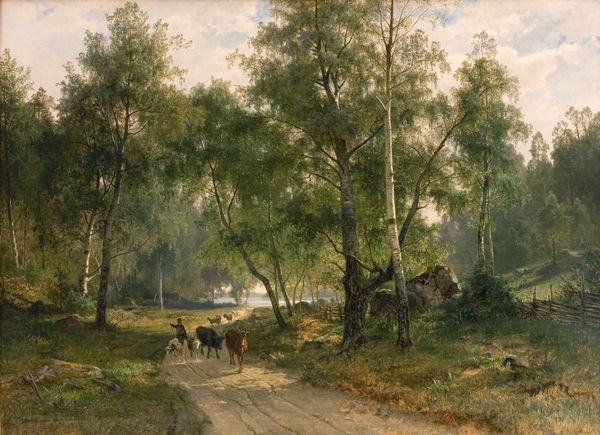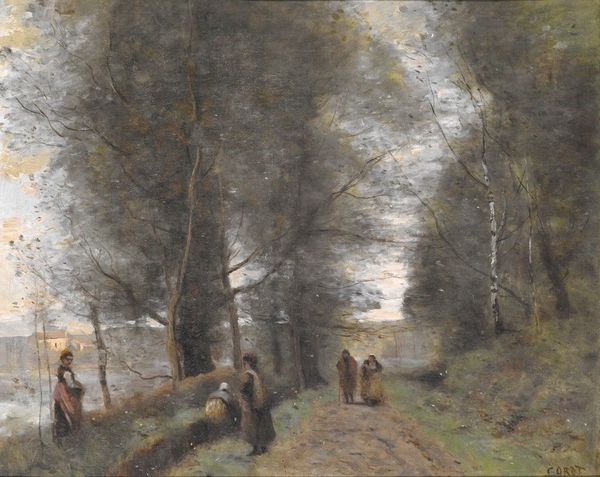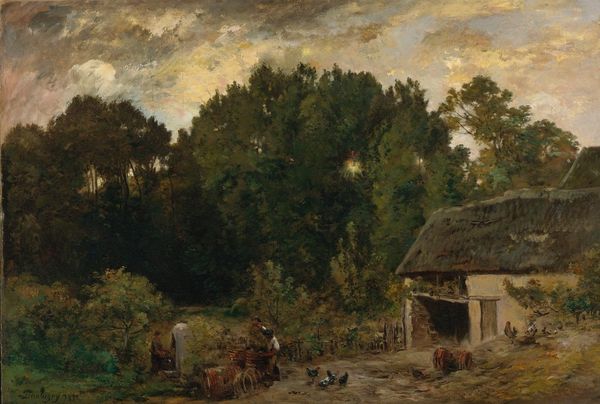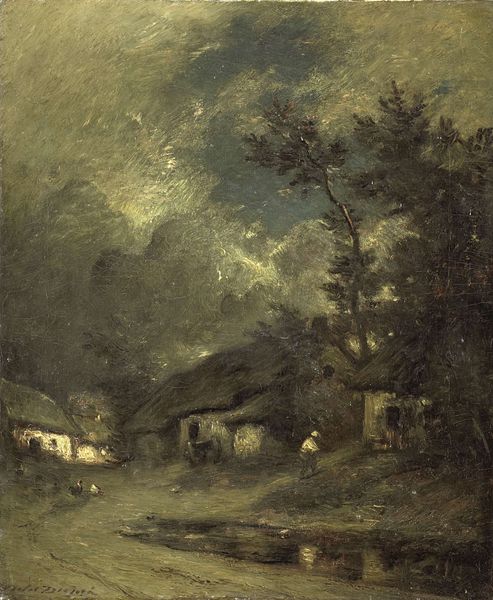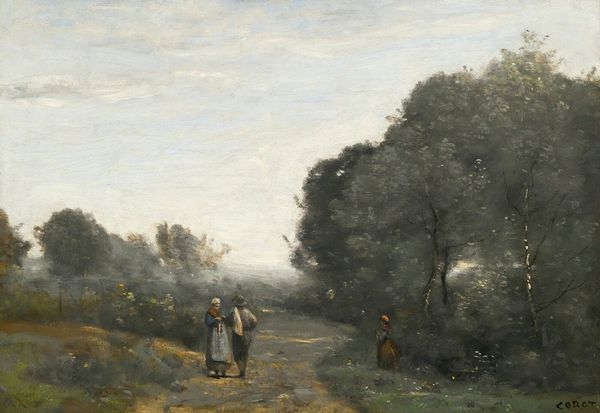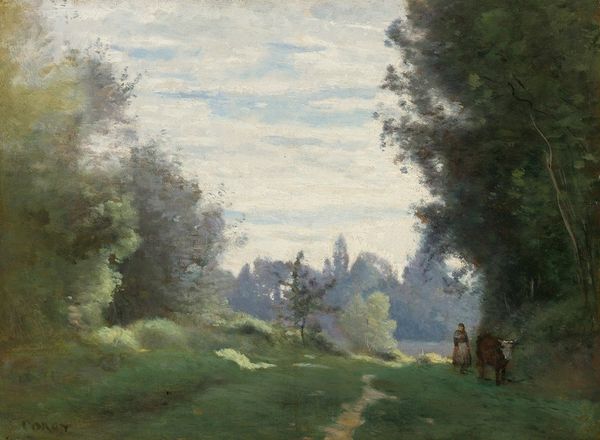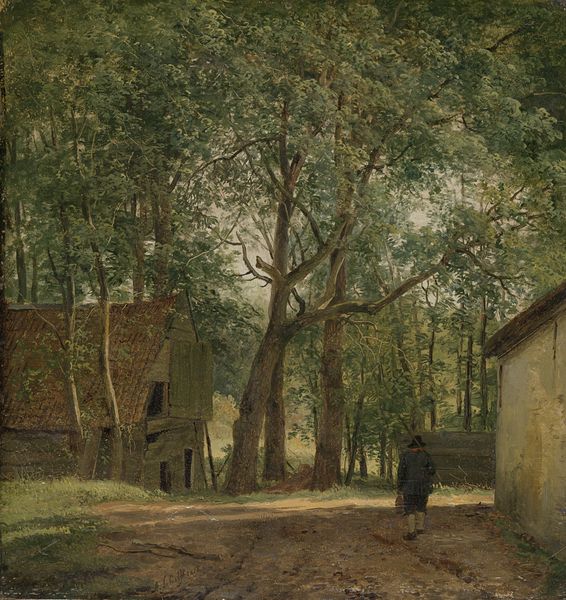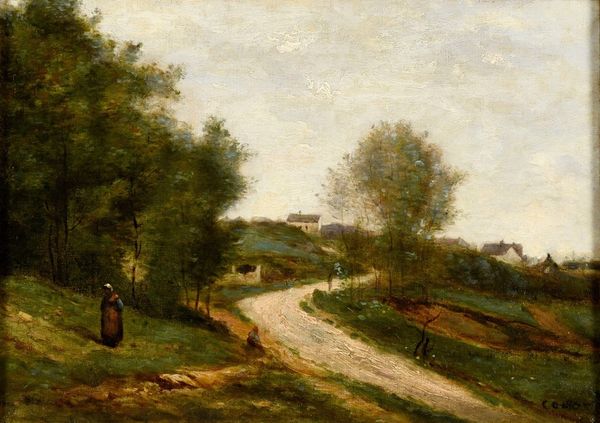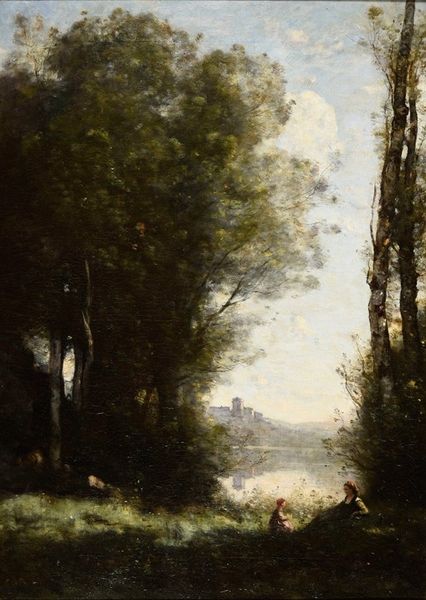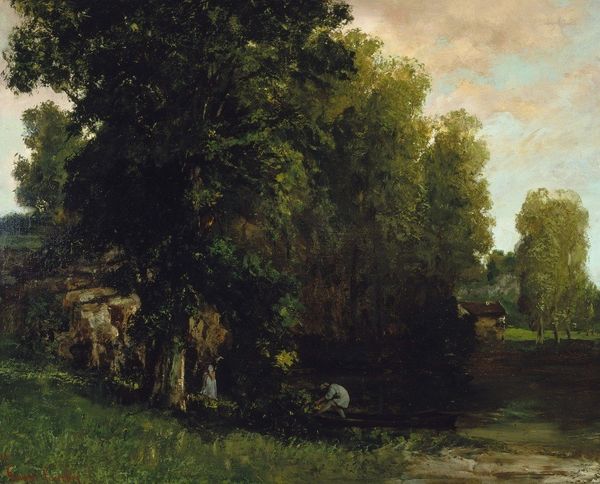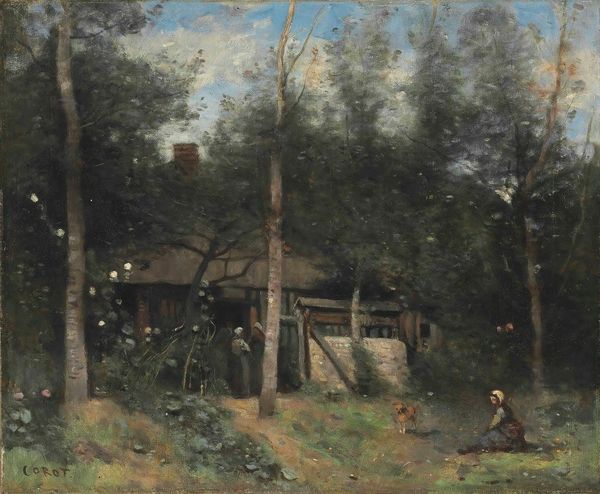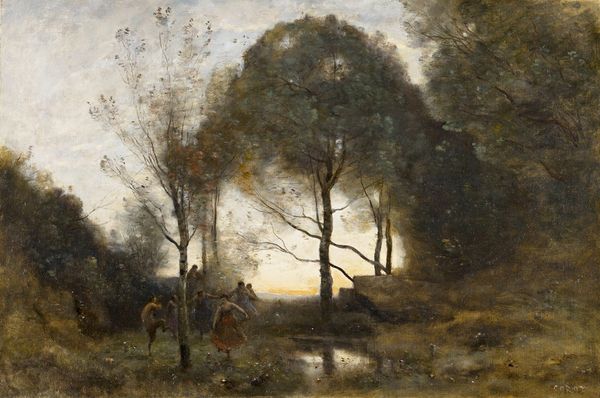
Copyright: Public Domain: Artvee
Editor: So, this is Corot's "Saint-Quentin-des-Prés," painted in oil around 1855-1870, and it’s said to be plein-air. There’s this amazing hazy light filtering through the trees, giving it a very serene feeling. How do you interpret the composition of this landscape? Curator: Focusing on the structural elements, note how Corot employs a tripartite division of space. The composition is clearly structured into foreground, middle ground and background by atmospheric and linear perspective, thereby creating spatial depth. We find a subtle colour modulation overall and tonal range, that create harmony. How might the loose brushstrokes affect your reading? Editor: Well, the visible brushwork certainly adds to that dreamy, ethereal quality I mentioned earlier, but it almost seems to soften the structural forms themselves. I wonder about the choice of that. Curator: Indeed, but is it solely a matter of softening? Consider that the painting does not necessarily aim at perfect representation but perhaps aims at suggesting something ephemeral. What if we approach the visible, impastoed brushstrokes as a series of codes forming their own language. The broken brushwork creates vibrancy. Editor: I hadn't considered the active role the brushstrokes themselves could play, like a semiotic system on their own. Thinking about it now, I wonder if the relative ambiguity of the central building draws the eye in a way that sharper lines would not. Curator: Precisely. This ambiguity pushes us away from purely mimetic representation toward something more evocative, more sensory. Do you observe that, for example, the light and colour create a harmony of feeling? Editor: Yes, the almost monochromatic quality makes one concentrate on tones instead of sharply contrasting areas. So, by avoiding hard lines, and building up the planes in a way which accentuates the brushstrokes, Corot directs our gaze less as a representational exercise and more as a contemplative experience. Curator: Precisely! The structural approach invites that kind of attentiveness.
Comments
No comments
Be the first to comment and join the conversation on the ultimate creative platform.
